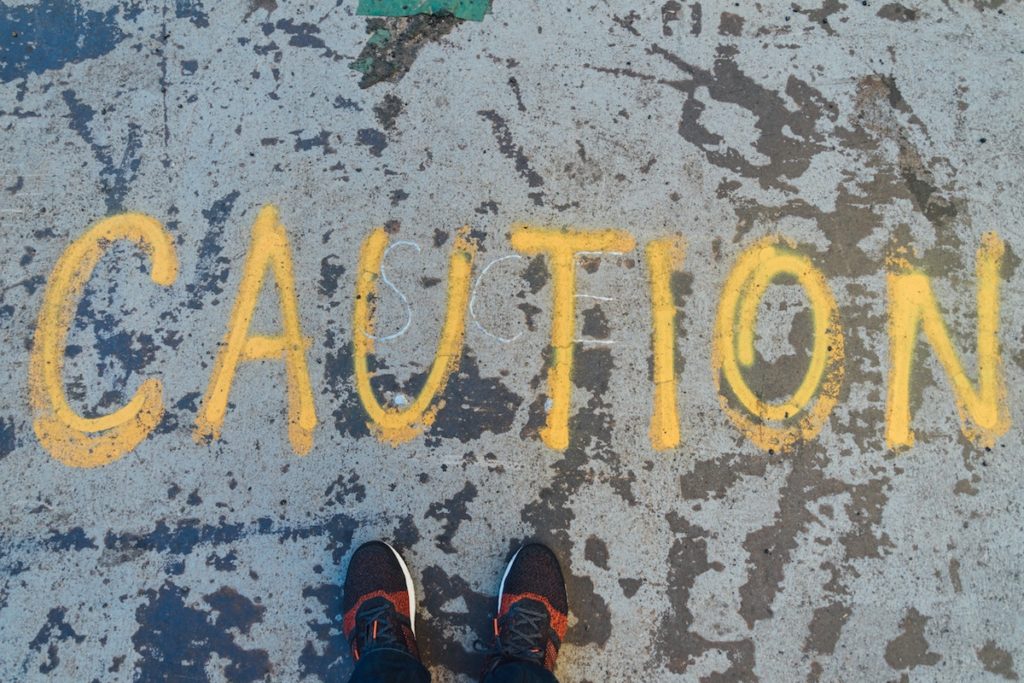
A year ago I left a profession I loved because I felt I couldn’t do it anymore. I am passionate about psychology, I am passionate about education and at my job interview in February 2014 I had confidently stated that I was an outstanding psychology teacher. Three years later I felt demoralised, deskilled and defeated. So I want to know why teacher burnout is so common and what, if anything, can be done about it.
The recent Stevenson and Farmer review (2017) of mental health in the workplace highlighted the annual cost to UK employers between £33 and £42 billion. In the education sector this equates to between £1,697 and £1,817 per employee per year lost to absenteeism, presenteeism (individuals being at work but being less productive) and staff turnover. Teacher recruitment is now falling below the target for rising pupil numbers, the number of full-time vacancies has increased since 2011, and in the year up to November 2016 one in ten teachers left the state sector (Foster, 2018), many leaving and taking a cut in monthly salary but experiencing greater job satisfaction (Bamford and Worth, 2017). Mental illness and teacher burnout seems to play a role in this, so how can the education sector improve the mental health of their employees and hopefully reduce these negative effects?

It’s estimated that mental health workplace difficulties cost UK employers £33-42 billion each year.
Teacher burnout
Having now done some research on burnout I can clearly see some of the symptoms described in myself by the time I left. Maslach et al. (2001) describe the three components of burnout as:
- Emotional exhaustion: a core element of burnout and the most widely reported, but not on its own sufficient, it is the impact that this exhaustion has on the other two elements of burnout that is crucial
- Depersonalisation: individuals will distance themselves from services users (in teaching this is students and parents) so that the service users become impersonal and objects of work rather than unique individuals
- Reduced Personal Accomplishment: this is the feeling that you are no longer doing a good job and that the job is no longer meaningful.
Teacher stressors
Classroom punch ups, my favourite mug disappearing to the other side of the school and late night hot chocolate spillages on marking were some of my more memorable stressors. However, actual research suggests that that teaching does have unique stressors such as the socio-emotional demands of working with 30 students at the same time (Roeser et al., 2012), interpersonal conflict with students, parents or colleagues (Unterbrink et al. 2012), discipline problems and disruptive student behaviour, time pressure and work overload, lack of student motivation or attention, and value dissonance (how much the teachers and students share the same values or norms) (Skaalvik and Skaalvik, 2017). In order to mitigate the effects of these unique stressors, interventions need to specifically address the demands of the job and may need to be different to interventions used in other occupations.

The three components of burnout are defined as emotional exhaustion, depersonalisation and reduced personal accomplishment.
Interventions
Mindfulness is the popular intervention at the moment, but is it effective? I know many teachers who roll their eyes when they hear the word. There are a wide range of interventions available to schools and the question is which one should they select? A recent meta-analysis by Iancu et al (2017), categorises interventions into 6 different types:
- Cognitive Behavioural Therapy (CBT): this aims to restructure thoughts or enhance problem solving and is aimed at enhancing employee coping skills
- Mindfulness and relaxation techniques: these encourage the individual to become aware of the triggers to a stress reaction, identify bodily sensations that accompany the feeling of stress and finally teach relaxation and coping techniques such as taking a break, breathing exercises, meditation etc
- Socio-emotional skills: teaching skills to manage the student-teacher relationship and challenging behaviour more effectively, and how to develop supportive relationships with students (this can be done through a variety of techniques)
- Psychoeducation: Teaching teachers about the prevalence of stress and burnout within education or more generally about mental health
- Social Support: Using group work to encourage colleagues to support and encourage each other
- Professional Development: Teachers are given training in classroom management skills or skills to improve student interactions.
So which interventions might best help teachers? In their recent meta-analysis Iancu et al. (2017) compared studies using the interventions above to answer a number of questions about interventions aimed specifically at reducing teacher burnout:
- Are interventions effective in reducing teacher burnout?
- Are all intervention types equally effective in reducing teacher burnout?
- Are interventions equally effective at different teaching levels?
- Does intervention efficacy vary as a function of the time lag between the end of intervention and the assessment moment?
- Does intervention efficacy vary as a function of the intervention length?

This meta-analysis compared a range of psychosocial interventions, to see which was most promising for reducing levels of teacher burnout.
Methods
Studies were selected if:
- They assessed general burnout, core burnout, or its components (exhaustion, depersonalisation or personal accomplishment)
- They assessed the above variables at both pre-test and post-test
- They had included a passive control group in the design (i.e. no intervention or waitlist)
- The burnout levels of the compared groups were equivalent at baseline (i.e., randomised allocation into groups and/or no statistical difference between groups in terms of targeted outcomes at baseline)
- They had reported statistical indices in order to compute the effect size regarding the difference between experimental and control groups.
The literature search covered 11 databases through the EBSCOhost interface. This gave 513 unique references and a search of abstracts reduced that to 70 potentially eligible studies. Reading the full text papers reduced things further to 23 papers: 19 journal articles and 4 dissertations. No restrictions were placed on the language of the articles, however, all the selections included were written in English. The risk of internal bias of the studies was assessed using the Cochrane risk of bias tool.
Data analysis
The meta-analysis was conducted using the Comprehensive Meta-Analysis version 2.0 and assumed a random effects model.
Results
1. Are interventions effective in reducing teacher burnout?
This meta-analysis found a positive effect for all the interventions on overall teacher burnout, although the effects are small. However, when the components are individually analysed there is an effect on emotional exhaustion (covered by 19 studies) and personal accomplishment (covered by 13 studies), but virtually no effect on depersonalisation (covered by 11 studies).
2. Are all intervention types equally effective in reducing teacher burnout?
- Emotional exhaustion is reduced significantly by mindfulness and cognitive behavioural approaches
- Personal accomplishment was significantly increased through mindfulness and social support
- None of the approaches seem to relieve depersonalisation symptoms.
3. Are interventions equally effective at different teaching levels?
Teachers tend to teach different age groups and the stressors may vary between the age groups taught, e.g. elementary school teachers report more intense emotions in the classrooms compared to secondary teachers. In this study three levels were considered: primary (~5-12 years old), middle (~12-15) and high school (adolescents preparing themselves for future jobs). Most interventions used a mixed sample (teachers from across all the ranges) and they report larger effect sizes, compared to primary and middle school teachers. Again these were for emotional exhaustion and personal accomplishment and not for depersonalisation.
4. Does intervention efficacy vary as a function of the time lag between the end of intervention and the assessment moment?
Results were compared less than one month after intervention (post-intervention), between 1-3 months after the intervention and more than 3 months after intervention. For all components of burnout the effects are almost null post intervention. However when measured between 1 and 3 months after the intervention emotional exhaustion and personal accomplishment were significantly improved. Only emotional exhaustion was measured more than 3 months after the intervention and the benefit had persisted.
5. Does intervention efficacy vary as a function of the intervention length?
For both emotional exhaustion and personal accomplishment the interventions that were between 1 and 3 months had the most significant effect. Interventions less than one month had smaller effect sizes. The length of the intervention had no effect on depersonalisation.

This review found small but significant effects of a range of interventions on emotional exhaustion and personal accomplishment in teachers.
Conclusions
The interventions do seem to have a small effect on two of the three symptoms of burnout: emotional exhaustion and personal accomplishment, but virtually no effect on depersonalisation. Mindfulness interventions seem to have the greatest impact showing improvements on all three areas of burnout (though the effect on depersonalisation is small). Cognitive behavioural interventions show a significant positive effect on exhaustion and interventions based on social support show a significant effect on personal accomplishment.
The researchers suggest that some of the interventions may have effects that are more distant in time so are not picked up in the post-intervention measures. For example social-emotional skills have a primary effect of improving relationships with students and a secondary effect of reducing burnout, at the post intervention measurement the effects are simply not observable and therefore follow up measures should be taken at a later time to assess the effectiveness of interventions.
In summing up, the researchers suggest that the small effect sizes they found raise problems to address in future research:
- Most interventions were developed using a general model of stress and did not address teacher-specific stressors. They suggest that researchers should focus more on the stressors specific to teaching and these stressors should be addressed by the interventions
- Many of the interventions were also aimed at improving other work related variables, so future studies should address a larger panel of well-being variables.
Strengths and limitations
Overall this meta-analysis appears to have been carried out in a clear and systematic way following the PRISMA statement. Included studies were assessed for bias by independent raters. Funnel plots suggest that there is some publication bias. The quality of the included studies was mixed, with under half (10/23) being assessed as low risk for bias, 6 being high risk and the remaining 7 having unclear risk of bias.
The review does not mention the potential harm that could be caused by the interventions, so it may be that the primary studies included did not measure this or simply that the reviewers were not interested in adverse effects. We know that only half of psychotherapy studies measure or report on the side effects of treatment, but clearly any intervention powerful enough to have a positive effect, will also have a negative effect on some individuals.
The authors suggest that one reason for the small effect sizes might be that teachers taking part in the study may not have been suffering from burnout and may not have needed the intervention in the first place. Without referring back to the original papers it is unclear how the participants were selected for the trials or the size of the populations. The interventions may be showing effects simply because the teachers that took part in the interventions were more motivated to participate particularly with longer interventions that focus on self-care (e.g. mindfulness). I would therefore question the efficacy of a school using these types of interventions as a blanket approach to supporting teachers struggling with burnout, without considering the needs and motivations of individual teachers.
From a school perspective one concern I have is that the authors state, early on, that the stressors for teachers vary across cultures, for example they state that in South Africa teachers often encounter a high prevalence of HIV/AIDS and take on the role of HIV/AIDS coordinator that can increase stress and risk of burnout. If the aim of the research is to establish which interventions are best at reducing teacher burnout and we acknowledge that the stressors are unique in teaching and potentially across cultures in teaching, the focus needs to be on specific cultural settings; for example teaching in a rural school may be very different to teaching in an inner city school where there may perhaps be greater value dissonance. This study would therefore not necessarily enable a school to identify a more or less effective intervention for their specific group of staff, but it will give some useful pointers.
The research team themselves come from Romania and none of the research covered in the meta-analysis is from Romania, so it does beg the question: how relevant is the research to the researchers’ own setting? Most of the research comes from the USA (14 out of the 23 studies) which, as the authors suggest, reduces the cross cultural validity of the results. It is perhaps the case here, however, where having less heterogeneity in the populations being studied would be more helpful in understanding how useful the interventions are in tackling burnout within a given teaching culture. It is worth noting that teacher burnout looks the same in any country and the interventions that are being used are not teacher-specific, so whilst there may be issues with considering whether a cross-cultural meta-analysis is helpful for understanding what may work in a particular school, it does give us a starting point to identify more or less effective strategies in helping reduce burnout and therefore a springboard for further research.

The overall quality of the research included in this review is far from perfect, so we should interpret these findings with caution.
Implications for schools
Teacher recruitment and retention is vital in keeping a school functioning effectively, as well as ensuring that the teachers already in post are in a position to be as effective as possible and cope with the demands of the job. In a busy environment such as a school it is most often up to the individual to ensure good self-care. Most of the interventions included in this review (particularly the ones that seem most effective such as mindfulness or CBT) place the onus on the individual teacher to change their behaviour and improve their skill set and the benefits are small.
During my recent conversations with teachers I’ve discovered that they feel they know what to do and how to look after themselves, but at the organisational level schools are not changing the way they are run to help alleviate the burden. In fact, the opposite is happening, as the pressure on teachers from the school (including the expectation of self-care) is increasing. Surely it is time to start looking at the education system as a whole, think about the expectations and workload demanded of teachers, and move towards implementing interventions at an organisational level?
Teachers (or at least the ones I know) are diligent, caring and conscientious to a fault. Often schools take advantage of this and work their staff into the ground. I suggest that we need to look in a different direction and ask people at the top of the profession to take some responsibility for reducing teacher burnout and improving the wellbeing of all professionals working in education.

Teachers know how to look after themselves, but the system itself is not helping to reduce burnout and promote self-care and wellbeing.
Conflicts of interest
None
Links
Primary paper
Iancu AE, Rusu A, Măroiu C et al. (2017) The Effectiveness of Interventions Aimed at Reducing Teacher Burnout: a Meta-Analysis Educ Psychol Rev (2017). https://doi.org/10.1007/s10648-017-9420-8
Other references
Bamford, S. and Worth, J. (2017). Teacher Retention and Turnover Research. Research Update 3: Is the Grass Greener Beyond Teaching? Slough: NFER.
Foster, D. (2018) Teacher recruitment and retention in England. Last accessed February 2018
Maslach, C., Schaufeli,W.B, Leiter, M.P., (2001) Job Burnout (PDF). Annual Review of Psychology 2001. 52:397–422.
Roeser, R. W., Skinner, E., Beers, J., & Jennings, P. A. (2012). Mindfulness training and teachers’ professional development: an emerging area of research and practice. Child Development Perspectives, 6, 167–173. [Abstract]
Skaalvik, E.M. & Skaalvik (2017) Dimensions of teacher burnout: relations with potential stressors at school. Social Psychology of Education 20: 775-790. [Abstract]
Stevenson, D. and Farmer, P. (2017) Thriving at Work: a review of mental health and employers. Last accessed February 2018.
Unterbrink,T., Pfeifer,R., Krippeit,L., Zimmermann, L., Rose, U., Joos, A., … & Bauer, J.(2012). Burnout and effort–reward imbalance improvement for teachers by a manual-based group program. International Archives of Occupational and Environmental Health, 85, 667-674. [Abstract]
Photo credits
- Photo by Nathan Dumlao on Unsplash
- Photo by Kinga Cichewicz on Unsplash
- Photo by Cel Lisboa on Unsplash
- Photo by Goh Rhy Yan on Unsplash
- Photo by Jordan Whitfield on Unsplash

[…] role and becomes cynical and unable to invest emotionally in work. Burnout can be observed among teachers, social workers, across health professions and can be a risk factor for poor mental health over the […]